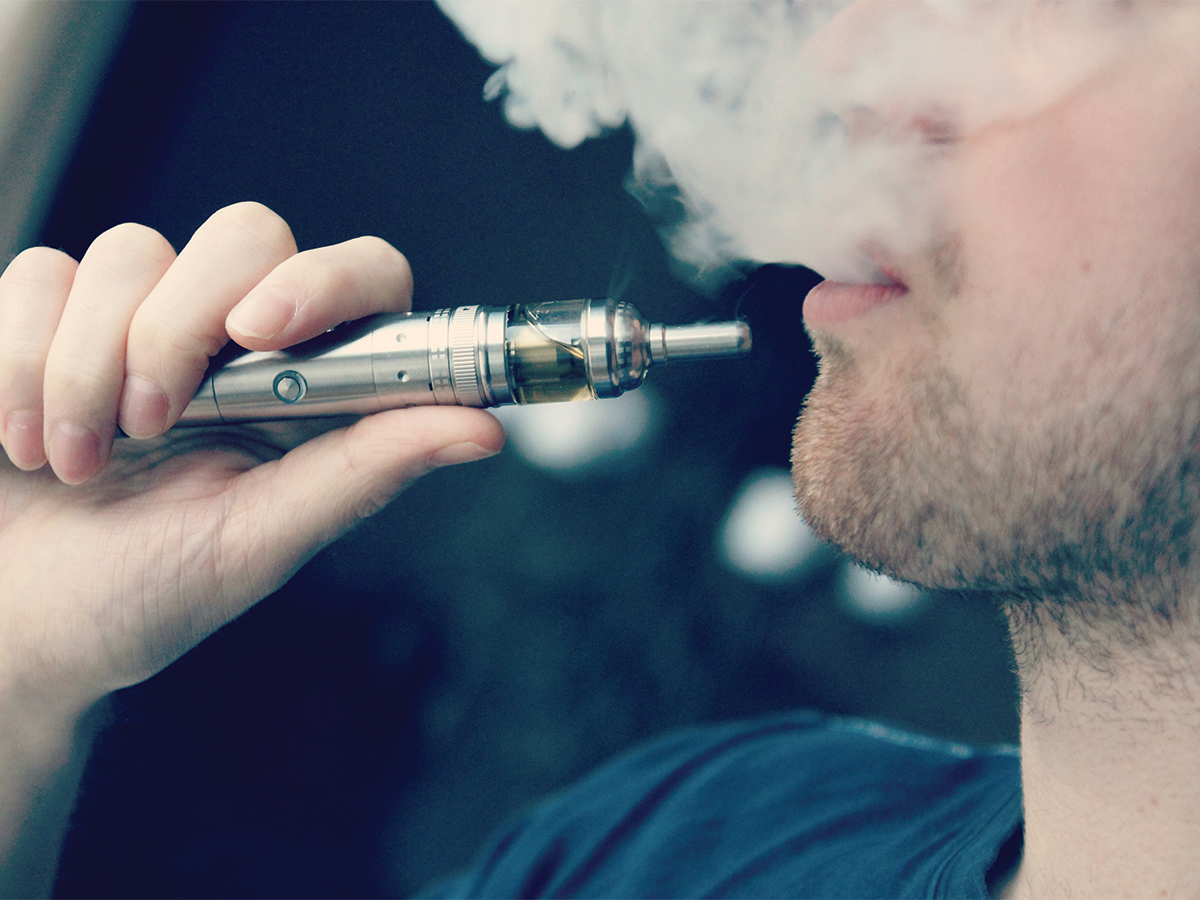The Food and Drug Administration (FDA) announced new regulations aimed at e-cigarettes and vaping products on Nov. 15, under suspicions that vendors of such products were not taking sufficient steps to discourage underage use of their products. The regulations have not yet materialized or been legally implemented, but if successful, would ban menthol cigarettes and require flavored e-cigarettes to be sold under more restrictive conditions in stores, like in closed-off booths to prevent access by teenagers.
The FDA’s bans are ultimately aimed at reducing underage usage of tobacco products, which have spiked in popularity in recent years. The new restrictions are being applied with a light touch, however, because the FDA finds itself between a rock and a hard place with regards to the e-cigarette question. If the pendulum is swung too far in pursuit of cracking down on underage use, not only does the administration compromise personal liberties, but it also could reduce access to a product that ostensibly helps thousands of individuals avoid smoking much more dangerous cigarettes. If swung the other direction, individuals trying to quit smoking could have free access to the products that are alleged to help them, but underage use will continue to remain at above 20 percent of all high school students.
The FDA faces a perfect dilemma, both directions of action seem unacceptable, but lack of, or even tepid, action may prove even less desirable if it cannot convincingly address either of the challenges. Ultimately, the FDA’s proposed restrictions seem to have found an acceptable, if imperfect solution. Requiring extra steps to purchase e-cigarettes seems likely to have a marginal effect towards its desired goal, but is an important step in the FDA’s mission nonetheless.
The FDA faces this public health challenge simply because tobacco product use has spiked sharply amongst underage users in the last year, largely mirroring the growing popularity of e-cigarettes. To address the problem, the FDA has to pinpoint the source of this growing popularity.
What’s become more prevalent in society today is the marketing techniques by e-cigarette companies like JUUL that capitalize off of the curiosity of younger audiences. Only recently did JUUL take down a large chunk of their social media posts, most of which contained depictions of young people vaping and enjoying Juuls. In addition, prior to the renovation of their website, which now contains more messages of discouraging minor usage, there were designs showing off the different flavors that JUUL sold their pods in, such as mango and creme brulee. Such images and advertisements implied the trendiness behind e-cigarettes, which calls business ethics into question.
JUUL did take the right steps in trying to clarify the audience they wished to cater to: active smokers who are looking for a transitional tool to help them eventually quit. To purchase a Juul would be giving the smokers a means to satisfy their urges to smoke without taking in as many harmful toxicants as a traditional cigarette. The chief executive of Juul labs also issued a statement declaring that their “intent was never to have youth use Juul.” Juul is only one of many e-cigarette manufacturing companies, albeit the most successful one lately. Although it’s well-intended for one of the biggest e-cigarette companies to try and reiterate to who their target demographic is, the damage might already be done since they’re already sitting atop a mountain of popularity that they gained from having marketed towards younger people in the past.
Whether or not the regulations imposed by the FDA will prove useful remains highly uncertain. There’s only so much the government can do in trying to reduce the amount of youth jumping onto a possible premature nicotine addiction. Bans or restrictions are often hard to label as successful due to the fact that people can typically find a way to get their hands on these substances if they want to. For instance, the age restrictions that are already in place aren’t exactly working due to the sheer magnitude of middle and high schoolers being caught with such devices.
Another example of preventative measures being taken but not resulting in optimal outcomes is the integration of programs, such as AlcoholEdu, to discourage excessive alcohol consumption at universities across the nation. It hasn’t exactly been proven effective in achieving their goal – according to a 2015 National Survey on Drug Use and Health (NSDUH), 58 percent of full-time college students ages 18-22 drank alcohol in the prior month. The limited effectiveness of alcohol education programs speak to the fact that even when young people may be well aware of the risks surrounding a certain type of behavior, their curiosity will eventually get the best of them if it’s appealing to society as the next trendy thing.
This also calls into question whether or not the government has a right to regulate other people’s behavior; some might view these newly introduced regulations as too intrusive, but they still might be in the best interest of society as a whole. In fact, e-cigarettes even offer up the lessened risk of secondhand smoke compared to regular cigarettes, which cause nearly 34,000 premature deaths from heart disease each year. Cigarettes are rightfully more stigmatized since they actually carry the potential to harm not just the smoker, but the people surrounding them. The risks to one’s health that accompany secondhand smoke are also higher in kids, whose bodies are still developing and therefore more vulnerable to the chemicals emitted through cigarette smoke.
If the FDA is firm on its goal of cutting back e-cigarette use, tactics in the past have proven successful in trying to change a consumer’s behavior. Anti-tobacco campaigns, after several tax hikes and jarring commercials, have shown successful rates of decline in the tobacco market, but this might be because of all these stigmas surrounding cigarettes – e-cigarette usage might be increasing, which may be attributed to the fact that e-cigarette usage isn’t necessarily harming anyone else.
However, it seems as though companies like JUUL are trying to introduce the same cautionary message that cigarette companies have utilized in order to emphasize the risks it can still bring to one’s health despite being a decent substitute for traditional cigarettes. Additionally, there are many organizations that plaster the internet with ads trying to discourage vaping. With all of these prevalent actions being taken to end the epidemic of youth addiction to nicotine, this could make a case for the libertarian who advocates doing whatever one wants without infringing on the liberties and rights of someone else. It’s feasible to say that because these anti-nicotine ads are becoming more mainstream, a person who still chooses to smoke is well aware of the fact that their health is being compromised, and one can argue that it’s their right to do what they want.
What’s also worth noting is that although it’s a fair point to let people simply do as they please as long as they don’t harm others, there’s no denying that nicotine products, in any shape or form, can eventually lead to long-term addiction and other problems such as permanent impulse-control issues. Despite JUUL’s continuous claims that their intended target audience is current smokers who are trying to slowly quit, the evidence is shaky surrounding the claim that e-cigarettes are effective at helping smokers quit at a faster rate than smokers who didn’t use e-cigarettes. JUUL also claimed that it had converted one million smokers to their product, but the company data came from self-reported surveys and couldn’t be verified for validity. In addition, JUUL’s claims also failed to account for the amount of nicotine addictions they may have fostered in minors. Teens are also more at risk for addiction due to the effects nicotine can have on the development of the brain’s reward system.
While we continue to ask ourselves at what point we should start paying more attention to the growing popularity of these products in the eyes of minors, consider that there’s another harmful side effect besides secondhand smoke that can affect unintended parties: non-smokers whose healthcare expenses go up due to smokers. It’s already been established that smokers are less likely to be covered by a health plan. As a result, when smokers start to experience health complications over their long-term addiction, workers at hospitals don’t get reimbursed and this passes on the cost to those with health insurance plans. This might mean that ways of discouraging nicotine use might be justified, whether it’s being smoked through the form of a cigarette or e-cigarette device. So although e-cigarette users don’t affect others through secondhand smoke, they still have the ability to affect third parties in a negative way.
It’s clear that society as a whole has an interest in reducing tobacco use, particularly among underage users. Thus, the restrictions on menthol and flavored cigarettes are measures that should be welcomed, even if they are overdue. These restrictions may be too little, too late, but in doing so they avoid the possible dangers that could be brought on by a broader stroke. Ultimately, the FDA was able to come up with a clearly imperfect solution to a problem that offers no clarity to begin with. It is unlikely that much will change, but the new move at least shows that the federal government is now paying attention.








